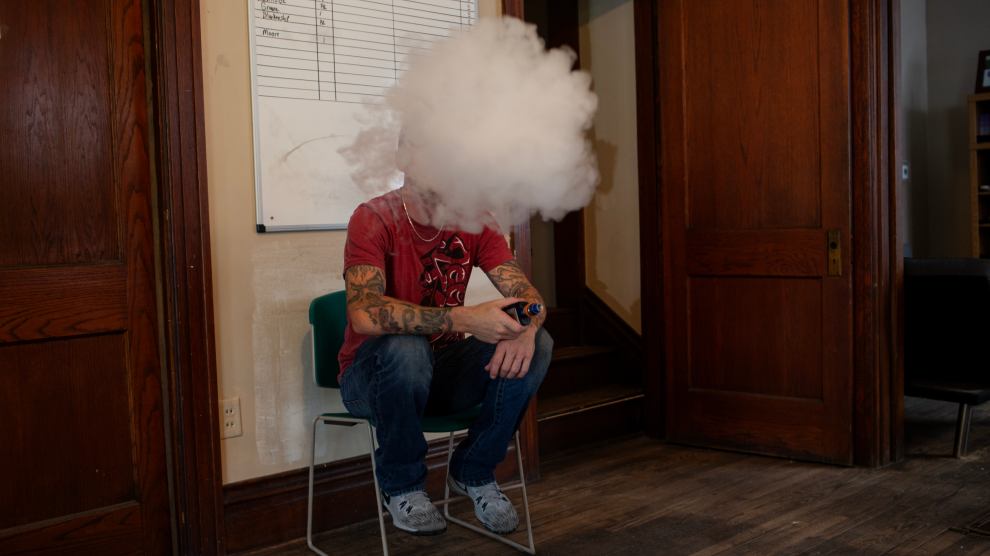
Three days before the subprime mortgage crisis hit the markets on August 10, 2007, the Federal Reserve issued a statement. The “risk that inflation will fail to moderate as expected,” they wrote, was their “predominant policy concern.”
Inflation had been all of 2.4 percent for the previous year. It had, before that, averaged just 3.1 percent since 1983. These numbers are so low that practically no one notices them at all.
In the first half of 2007, inflation did rise, entirely because of surging oil prices. But by August that was finished. June’s inflation was just 0.2 percent; July’s was half that. Yet the possible failure of inflation to moderate was still, as of August 7, the “predominant policy concern.”
This view was unanimous, by the way.
Meanwhile, sub prime mortgage lending didn’t rate a mention. The Federal Reserve statement did note in passing that financial markets were “volatile,” credit conditions “tighter for some households and businesses,” and the “housing correction [sic] is ongoing.” The next sentence begins, “Nevertheless.”
But what is subprime mortgage lending? It is, by definition, long-term lending to people with low incomes or bad credit. Loans like that are very risky.
Some of the borrowers are good-for-nothings with nothing to lose and no intention to repay. But most are well-intentioned and borrow in good faith. Many are simply unable to resist the lure of cheap money and a home to live in. Many never read the terms of their loans. They never suspected by how much their payments might explode two or three years down the road. They are, in short, the victims of a financial fraud.
The fact is that both kinds of borrowers—the reckless and the naïve—got loans in this market. Why? Obviously, for the fees—they’re just a bit on each loan. But when you’re talking $600 billion in subprime loans in 2006, the originators made their money on volume. The loans were then repackaged and sold—as mortgage-backed securities. The default risk was thus transferred to big investors, including hedge funds, who are attracted to risk. In this way, the relationship that used to exist between borrower and banker is broken. So long as the loans can be sold to hedge funds and mutual funds, the bankers who made the loans initially don’t much care whether they’re repaid in the end.
Since the biggest investors know the score, their game is clear. It is to create a pool of such risk, with potential for such havoc—including political havoc—that when things go wrong the central bank will have to ride to the rescue. That was the accomplishment of Bear Stearns in the U.S., and of UBS and others in Europe, whose bankrupt funds were bailed out by the European Central Bank at once, to the tune of more than $200 billion dollars in discount loans.
This is financial blackmail, with hostages, on a large scale. It sets up a collision course between the Fed with its inflation obsession and the speculators with their high-wire act.
The Fed knew this. And so when the crisis broke open on August 10, Bernanke resisted action. St. Louis Fed bank president William Poole, the last living hard-money monetarist, became de facto spokesman for the do-nothing, let-‘em-fail, liquidate-‘em-all position in a tradition going back to Herbert Hoover’s Secretary of the Treasury, Andrew Mellon, in 1930. This scared the daylights out of Jim Cramer, spokesman for the speculators.
But Cramer needn’t have worried. The hard line wasn’t tenable. It never is.
It took a week. On Friday, August 17, as the markets panicked around the world, Bernanke cut the discount rate and extended the term of discount loans to 30 days. More important still, in a conference call with the big players, the Fed urged them to borrow what they needed. Cash flowed, and the stock market took heart—at least for a few days. For a short while, the air was back in the balloon. Bernanke’s actions made unlimited cheap credit available to any bank for any reason. Banks with large portfolios of mortgage-backed securities benefited directly. But all banks could, if they chose, make loans onward to financial firms in even worse shape, which could not borrow directly on their own.
The Fed thus cut interest rates precisely to speculators who would otherwise have suffered immediate losses. Some—notably Countrywide Financial, the largest mortgage lender in the U.S.—might otherwise have been bankrupt within days. Interest rates paid by you and me, on the other hand, did not fall.
This is how the system works. Big players can, and do, put the Federal Reserve over a barrel. The Fed doesn’t like it, but what can it do? Not to bail, when the markets implode, isn’t an option. Too many innocents would get massacred on the way by.
Sordid necessity thus killed Bernanke’s “inflation targeting” approach to monetary policy. And this leaves the true nature of Fed policy plainly exposed. In normal times, a Fed chair can pretend to follow his academic formulae. But once the air-raid sirens sound, policy isn’t made on Constitution Avenue at all. It’s made on Wall Street, and don’t let us forget it.
Wall Street likes volatility. And so we have a system based on credit bubbles, one after the other. The information-technology bubble from the late nineties to 2001 brought us full employment and budget surpluses, but it could not be sustained. The housing bubble has kept us going ever since. It too was bringing us high employment and falling budget deficits. And it too could not be sustained.
If you’re thinking this is no way to run a railroad, you are right. But short of shutting down Wall Street, what can we do?
For starters, how about a policy that cushions the losses to lower-income Americans who got trapped in escalating payments on depreciating houses? How about some ways of converting those unpayable loans into rentals or long-term, fixed-rate mortgages for first residences, so that people can at least stay in their homes?
For the financial institutions, the solution is triage. Yes, the Fed has to lend. But it doesn’t have to let the blackmailers escape. It has the power to close (and, where appropriate, to prosecute) the most flagrant operators. It can merge the marginal cases, deposing their management. And it can tighten up regulation on the survivors.
What sort of regulation? How about banning lending practices that are predictably likely to bring on debt peonage and financial ruin? Why—just for instance—do we permit teaser rates—rates that are fixed and low for a couple of years but that then convert to much higher adjustable rates—on mortgage loans? The only purpose of such rates is to mislead borrowers into thinking they can afford a home when, in fact, they cannot. Why not set rules in this market, requiring that financial instruments for low-income borrowers be stable and transparent?
In a recent article, Harvard Law professor Elizabeth Warren proposes a “Financial Product Safety Commission” that would evaluate, rate, and approve or disapprove new types of loans. It’s a very smart idea, modeled on the Consumer Product Safety Commission, a proven success until the Bush gang gutted it. But true reform in this area must begin with a basic change of attitude. This is an area where free markets are by their very nature tilted against working people. Something powerful, and independent, has to weigh in on the other side.
We’ve seen it before, we see it now, and if we do nothing, we’ll see it again. Lending is too important to be left entirely up to bankers. So it’s past time for Ben Bernanke to stop tilting at the inflation windmill, and to get serious about bringing the hostage-takers to heel.
















